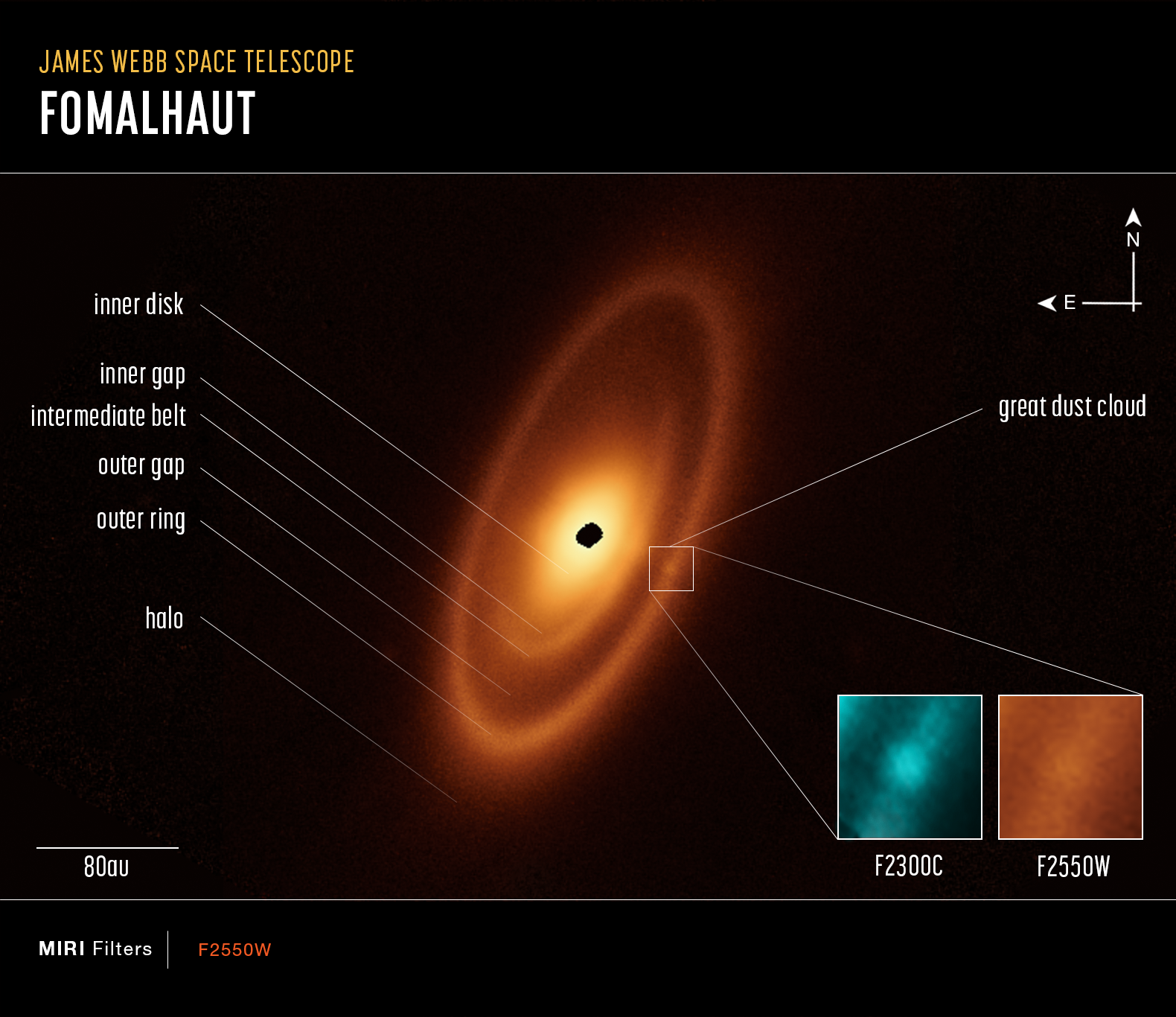Sometimes wishes do come true.
One of my absolute to wishes was for the James Webb telescope to image the star Fomalhaut .
This was originally shown to have a dusty disk by earlier observations, then we were told that there were a couple of planets. Then the discovery of planets was retracted.
And that’s how the situation rested before the James Webb. Now the James Webb has imaged Fomalhaut in much more detail. The dusty disk is there, but instead of a planet there is an unexplained dust clump in the disk.
https://apod.nasa.gov/apod/ap230511.html
